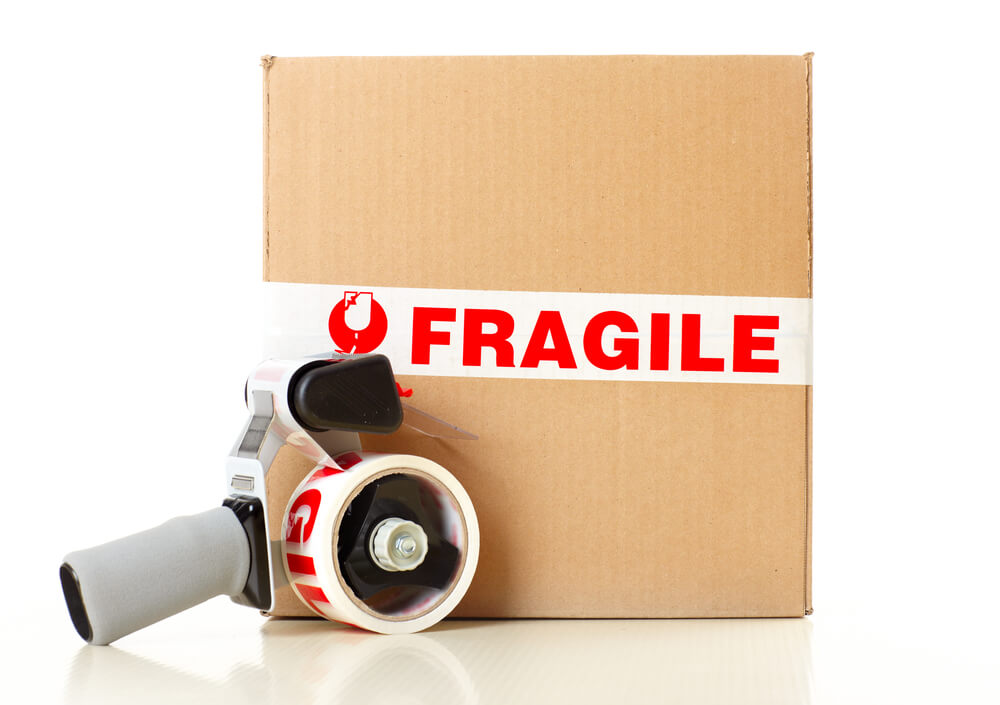You’ve found the house of your dreams, and it’s time to start boxing up your belongings for the move to your new home. Of course, this includes packing your cherished family heirlooms, old photos and other irreplaceable possessions. These fragile items deserve extra attention to avoid damage — simply being careful with the boxes isn’t enough. Follow these moving packing tips from the team at Master Movers to help get your things from here to there safely.
Storage Packing vs. Moving Packing Tips
Packing for a move isn’t just a matter of putting all of your things in boxes. For the purpose of storage, that may fit the bill. Storage boxes typically sit still for days, weeks, maybe even years. In those cases, a secure container that keeps its contents safe from the elements is all that’s needed. However, whether you’re moving across town or across the country, packing for a move is much more involved.
Our Top Nine Moving Packing Tips
To help you pack properly, we’ve gathered this short list of important moving packing tips. We recommend reading through them all before your move to make sure you’re prepared for the work. If you have any questions (or simply want us to do it for you), call our team of professionals to discuss your options.
1. Use Moving Boxes
While many people opt to hunt through local grocery and liquor stores for free boxes, that decision has cost a few of them a lot more than they bargained for. Weak cardboard and glue, high moisture levels and damaged corners of scavenged boxes can all lead to box failure. Using actual moving boxes is a much safer and more economical choice in the long run.
Proper moving boxes are sturdy and designed to hold up to the heavy loads and stresses involved in moving your belongings. They are also uniform in size, which helps greatly when loading the van. Having standard small, medium, large and extra-large box sizes allows for easy grouping and a minimum of wasted space.
2. Pack One Room at a Time
Start in one room of your house and pack everything from that room. In general, it’s best to resist the temptation to mix the contents of your boxes with items from different parts of your home. Even if the items are similar in use, size or weight, unpacking is much easier when everything in any given box belongs in the same destination room. The exception to this rule is putting your towels and old tee shirts to use as padding; see Tip #6 below!
3. Pack Heavier Items in Smaller Boxes
It may be tempting to put several large or heavy items into your larger boxes. However, as anyone who has ever lifted a large box of books can tell you, smaller is better with heavy items. Things like dishes, books and tools are better packed in small and medium-sized boxes. They are easier to handle and less likely to become damaged.
4. Put the Heavy Items on the Bottom
Speaking of heavier items, be sure to place them in the bottom of your boxes. This increases the box’s stability by lowering the center of gravity. This tip also protects other items in the box from being crushed.
5. Clearly Mark the Boxes
It’s not enough to mark your boxes with your initials or “number x of y.” Instead, mark each box on the front, back and top with the name of the room where its contents belong. If you really want to make sorting easy, consider using different colors of ink to further organize your move.
6. Fill All of the Space in the Box
If you’ve emptied the contents of your computer desk and still have extra space in the box, don’t just tape it up. Leaving unfilled space in the boxes allows the contents to shift during moving, loading and unloading. This will not only make carrying the boxes more difficult, it could also cause damage to your items. When there is extra space in the box, fill it up with towels or clothing so everything is safe and secure.
However, you should also be wary of overfilling your boxes. The top flaps of your box should close easily and leave a flat, stable surface for stacking.
7. Don’t Be Chintzy with the Tape
Paying for a few rolls of extra tape is much cheaper than replacing your glassware or collectibles. Be sure to tape across the top and bottom of the box at least twice. It’s also a good idea to run tape around the top and bottom edges of each box to help strengthen these stress points.
8. Give Yourself Plenty of Time
Packing for a move is a time-consuming process. If you think it will take one hour to pack a room, allow for two. Start planning for your packing as soon as you can! For instance, a good place to start is packing items such as holiday decorations or seasonal clothing that won’t be used before your move.
9. Call the Team at Master Movers!
If the idea of packing all of your belongings leaves you feeling overwhelmed even after reading our moving packing tips, give us a call. We are the Portland area’s packing and moving experts! Our many years of experience with long-distance and local moves means we know exactly how to pack safely for the trip.


